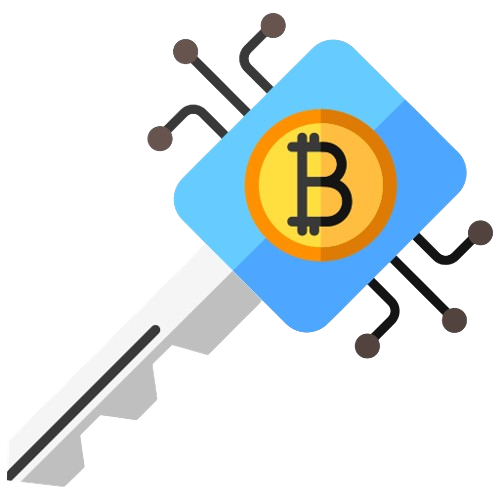
The meteoric rise of cryptocurrencies like Bitcoin and blockchain-based NFTs (non-fungible tokens) represents a seismic shift in how value is stored, transferred, and created online. In the United States, these two disruptive innovations are becoming intertwined as adoption accelerates across the tech vanguard, creators, businesses, and investors. Examining this evolving symbiosis provides insight into the maturing infrastructure rapidly reshaping finance and culture.
This analysis will explore intersections between Bitcoin and NFTs emerging in the US crypto economy. Topics will range from how blockchain supports both technologies, to using Bitcoin for NFT purchases and unlocking new functionalities. We will also examine associated growth areas like DeFi, DAOs, tokenization, and more. While still early, these digital duo phenomena are unleashing transformations that will likely scale exponentially in synergistic ways.
The Blockchain Backbone
The foundational innovation enabling both Bitcoin and NFTs is blockchain technology. This decentralized digital ledger provides immutable record-keeping and transaction processing without centralized intermediaries. It enables trustless peer-to-peer exchange and value transfer online.
For Bitcoin, blockchain allows minting and transacting the cryptocurrency in a transparent, verifiable manner without requiring banks. And for NFTs, it provides irrefutable digital provenance tracing artwork to creators. Blockchain supports securing digital ownership rights, exchanging assets trustlessly, and creating programmable contracts.
This breakthrough architecture is spurring exponential growth in both spaces. It provides the rails for moving value and content seamlessly while preventing fraud. The fusion of blockchain, Bitcoin, and NFTs promises to fundamentally expand what is possible online.
NFTs Unlocking New Bitcoin Use Cases

NFTs are expanding Bitcoin’s utility by enabling more applications of its blockchain beyond just payments. Initiatives like NFTfi allow the use of Bitcoin as collateral for loans to purchase NFTs. The NFT acts as redeemable collateral if the BTC is not repaid. This expands access to NFT markets for Bitcoin holders.
Other efforts like Stacks enable Bitcoin transfers between different blockchains. And Taro provides wrapped Bitcoin for use on Ethereum where many NFT platforms operate. These bridges make Bitcoin compatible with NFT transactions and services, boosting its circulation.
And ideas like digitizing real estate or corporate stocks as NFTs could bring liquidity to traditionally illiquid assets. Bitcoin and other cryptocurrencies may emerge as preferable currencies for these NFT markets thanks to speed, cost, accessibility, and blockchain integration.
Supercharging NFT Liquidity with Crypto
NFTs suffer from two key issues hampering adoption – lack of liquidity and pricing volatility. Integrating cryptocurrency payments can help mitigate both challenges.
Unlike fiat, crypto never stops trading. This 24/7/365 liquidity enables instant NFT sales and settlements anytime globally. Crypto-based marketplaces like OpenSea also facilitate trading rare digital art and collectibles across borders seamlessly.
Accepting cryptocurrency payments also helps set stable NFT pricing during market fluctuations. Pegging sales in USD or ETH, for example, makes NFT costs predictable regardless of fiat volatility.
These dual benefits make crypto and NFTs natural complements. Migrating transactions to blockchain rails unlocks perpetual trading and insulation from broader economic instability.
Shared Ethos of Decentralization and Disruption
Conceptually, Bitcoin and NFTs share an ethos of decentralization and disrupting established paradigms through blockchain innovation. This foundational linkage helps explain their affinity and ability to thrive symbiotically.
Both challenge centralized gatekeepers and institutions by enabling peer-to-peer exchange and community-driven networks. Transferring value via cryptocurrency or NFTs reduces intermediary friction and costs.
They also exemplify permissionless innovation unbound by traditional constraints. Anyone can create or trade NFTs, and access Bitcoin’s open-source network. These liberties spawn wholly new markets and business models that legacy systems cannot.
This ethos also attracts similar mindsets and demographics to both Bitcoin and NFTs – tech optimists, libertarians, digital creatives, and savvy youth. Shared ideals between creators and supporters help drive symbiotic adoption and infrastructure.
Coevolution Spawning New Products and Players
The interdependent rise of Bitcoin and NFTs is co-creating an entire ecosystem of supporting products, services, and institutions. This coevolution catalyzes further growth through specialization.
For example, marketplaces like SuperRare and Async Art specifically cater to NFT artists and collectors by integrating cryptocurrency payments, digital wallets, and blockchain-registered inventory.
Technical infrastructure like metamask browser extensions simplifies transacting crypto and NFTs across decentralized sites and services using one’s secure crypto or Bitcoin wallet. No banks are required.
New companies like MoonPay and Wyre provide fiat on-ramps allowing seamless conversion from USD to crypto to purchase NFTs. This financial plumbing undergirds the consumer experience.
By synergizing, decentralized solutions are converging to make engaging with Bitcoin, NFTs, and blockchain increasingly frictionless.
Fueling Innovation in DeFi, DAOs and More
The fusion of cryptocurrency and NFTs serves as a springboard for innovations like decentralized finance (DeFi) and decentralized autonomous organizations (DAOs).
DeFi utilizes blockchain to provide financial services digitally outside traditional institutions. Bitcoin and NFTs transferred peer-to-peer serve as collateral for loans and other instruments.

DAOs allow leaderless collective governance, cooperation, and decision-making around crypto projects and communities via codified rules. Holding a project’s tokens or NFTs grants voting rights.
Shared ideals of decentralization make Bitcoin and NFTs natural complements for enhancing these emerging models. Joint adoption creates positive feedback driving further creativity.
Conclusion
In summary, the rising symbiosis between Bitcoin and NFTs signals how blockchain is unlocking entirely new paradigms in finance, culture, and technology where digitally native value creation flourishes. While early, integrations between cryptocurrency and digital art are already begetting greater utility for both, attracting creative talent and spawning supportive infrastructure. Moving forward, expect this digital duo to continue harmonizing in groundbreaking ways while empowering individuals and communities to redefine wealth, ownership, and exchange on their terms.